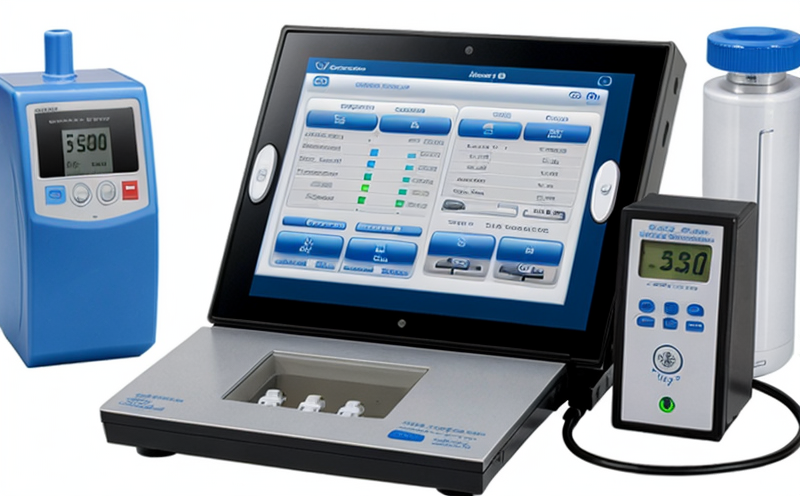Endurance Testing of Infusion Pump Mechanical Components
The endurance testing of infusion pump mechanical components is a critical aspect of medical device development and quality assurance. This test ensures that the mechanical parts of an infusion pump, including gears, motors, valves, and pistons, are capable of withstanding prolonged operational use without failure. The primary goal is to identify potential weaknesses or design flaws in these components before they reach the market.
Infusion pumps play a vital role in patient care by delivering precise dosages of medication directly into the bloodstream. Their mechanical parts must be robust and reliable, as any malfunction can lead to serious medical complications. This test simulates real-world operating conditions that the pump will face over its expected lifespan, such as continuous operation, varying flow rates, and exposure to different pressures.
The testing process involves subjecting the infusion pump's mechanical components to a series of repetitive cycles designed to replicate long-term use. These cycles are typically defined by ISO standards, which specify the number of cycles required for each component based on its intended usage frequency. For instance, some tests may require up to 100,000 cycles or more.
During the test, engineers closely monitor various parameters such as temperature, vibration, and noise levels. This data is collected using high-precision sensors integrated into the testing equipment. The aim is to detect any changes in performance that could indicate wear or degradation of the components over time. Any anomalies are documented meticulously for further analysis.
The results of this endurance test provide valuable insights into the durability and reliability of the infusion pump's mechanical parts. This information is crucial for manufacturers to optimize their designs, improve manufacturing processes, and enhance overall product quality. Compliance with regulatory standards such as ISO 14711 ensures that the devices meet safety and performance requirements.
Quality managers and compliance officers rely on these test results to ensure that the infusion pumps they produce are safe and effective for patients. R&D engineers use this data to refine their designs, making improvements where necessary. Procurement teams can leverage the findings from these tests when selecting suppliers, ensuring that only high-quality components are used in manufacturing.
By incorporating endurance testing into the development process, manufacturers demonstrate a commitment to patient safety and satisfaction. This proactive approach helps prevent recalls and improves the reputation of the company within the healthcare industry.
- Precision Monitoring: Utilizing advanced sensors to track temperature, vibration, and noise levels during prolonged cycles.
- Data Collection: Collecting detailed records on component performance throughout testing.
- Regulatory Compliance: Ensuring adherence to international standards like ISO 14711 for accuracy and reliability.
The information gathered from this test is essential for manufacturers to achieve regulatory approval, improve product design, and ensure patient safety. By investing in thorough endurance testing of infusion pump mechanical components, companies can enhance the performance and longevity of their products, ultimately benefiting both healthcare providers and patients.
Benefits
The benefits of conducting endurance tests on infusion pump mechanical components are numerous and far-reaching. Firstly, these tests significantly reduce the risk of product failure in clinical settings. By identifying potential issues early in the development process, manufacturers can address them before the product reaches the market, ensuring a higher level of reliability.
Secondly, endurance testing enhances patient safety by minimizing the chances of mechanical malfunctions that could lead to adverse events. This is particularly important given the critical role infusion pumps play in managing patients' medication regimens accurately and safely.
A third benefit is improved product quality and reputation. When companies consistently produce reliable medical devices, they build trust with healthcare providers and patients alike. This positive reputation can translate into increased market share and customer loyalty.
Moreover, compliance with regulatory standards ensures that the infusion pumps meet stringent safety and performance criteria set by governing bodies worldwide. This not only simplifies the approval process but also instills confidence in regulatory authorities regarding the quality of the product.
Finally, endurance testing provides valuable data that can be used to optimize manufacturing processes. Engineers can use this information to identify areas for improvement, leading to more efficient and cost-effective production methods. This ultimately results in lower manufacturing costs without compromising on quality or performance.
Why Choose This Test
Choosing endurance testing for infusion pump mechanical components offers several advantages that make it an essential part of the medical device development process:
- Precision and Reliability: Ensures that all mechanical parts function correctly under prolonged use.
- Risk Mitigation: Identifies potential issues early, reducing the likelihood of product failures in clinical settings.
- Patient Safety: Minimizes risks associated with mechanical malfunctions and enhances overall patient care.
- Regulatory Compliance: Guarantees adherence to international standards for safety and performance.
- Data-Driven Improvements: Provides detailed insights into component behavior, aiding in design enhancements and process optimizations.
The combination of these benefits makes endurance testing an indispensable tool for manufacturers aiming to produce high-quality, reliable medical devices that meet the highest standards of safety and efficacy.
Environmental and Sustainability Contributions
While the primary focus of endurance testing is on ensuring product reliability and patient safety, it also contributes positively to environmental sustainability. By identifying design flaws early in the development process, manufacturers can minimize waste by avoiding the production of defective products that ultimately end up as medical device waste.
The use of advanced sensors during endurance tests allows for precise monitoring of component performance, reducing the need for extensive trial-and-error cycles. This efficiency translates into lower energy consumption and reduced carbon footprint throughout the product lifecycle. Additionally, the data collected from these tests helps manufacturers make informed decisions about material selection and manufacturing processes, further promoting sustainability.
Compliance with international standards ensures that the infusion pumps produced meet stringent environmental regulations, contributing to a greener healthcare industry. By adhering to these standards, companies not only enhance their reputation but also play a role in reducing the environmental impact of medical devices.





